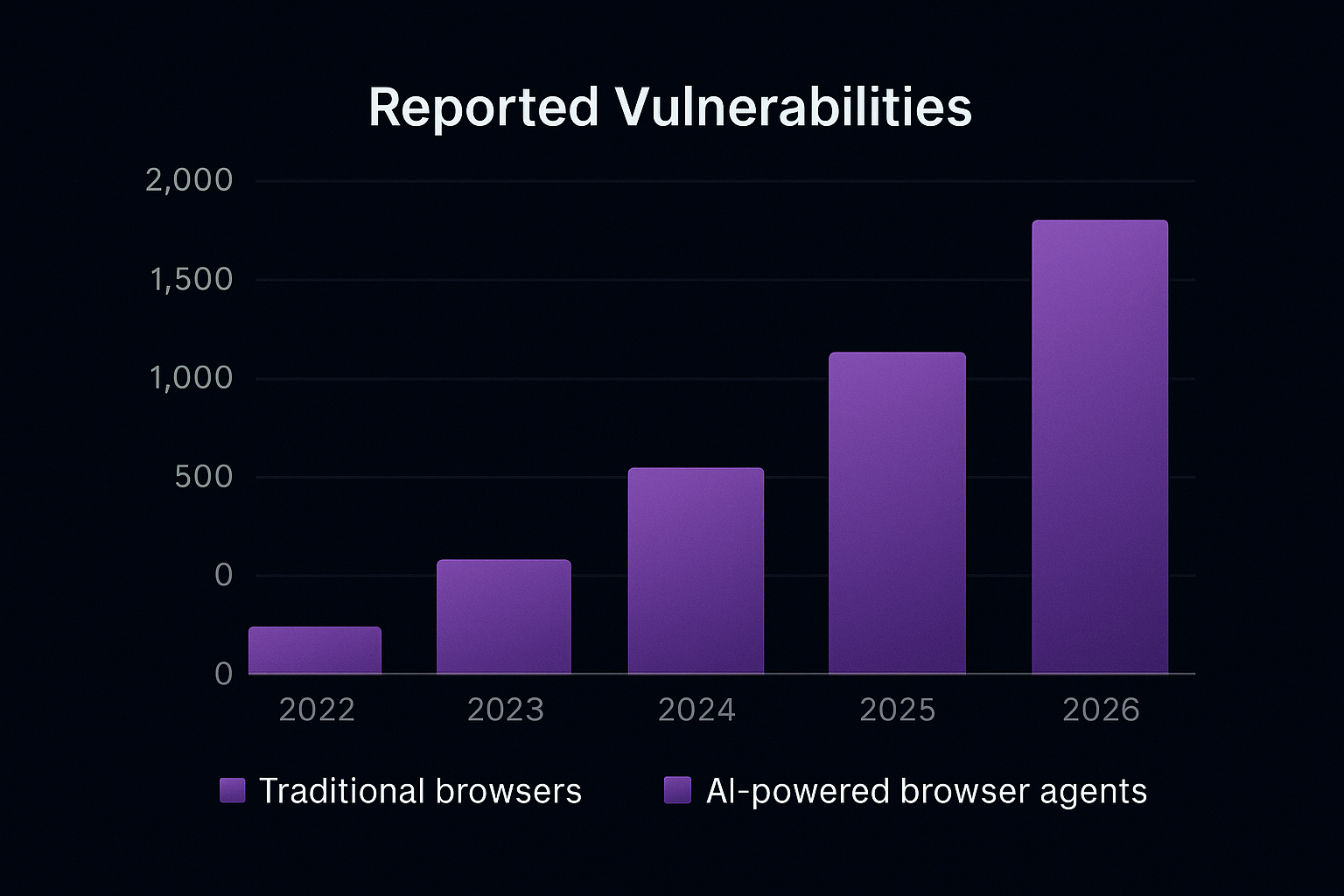
🧠 Custom Silicon, AI Chips & the Infrastructure Arms Race: How India and the World Are Redefining Intelligence Itself
🧠 Custom Silicon, AI Chips & the Infrastructure Arms Race: How India and the World Are Redefining Intelligence Itself 🌍
Today’s web browser isn’t just a portal to sites—it’s evolving into an autonomous AI-enabled agent. Browsers such as ChatGPT Atlas and Comet from OpenAI and Perplexity respectively, are designed to summarise, act, navigate and even execute tasks for users. The innovation is undeniable, but so are the risks.
Security researchers warn these “smart” browsers may be a cybersecurity time bomb.
In this article, we’ll explore how AI browsers work, why they pose novel threats, and what organisations and users must do to navigate this paradox of innovation meeting unprecedented risk.
Traditional browsers wait for user input and simply render web pages. AI browsers, in contrast, can interpret, summarise, navigate, and in some cases act on behalf of the user. For example, they may fetch documents, fill out web forms, or automate workflows.
But this high level of autonomy increases the attack surface. A security piece from TechCrunch aptly notes: “The main concern … is around ‘prompt injection attacks,’ a vulnerability where malicious instructions are hidden on a web page and interpreted by the AI browser.”
We are seeing a shift from user-driven browsing to agent-driven browsing, and that shift carries both productivity gains and deep security implications.
One of the biggest threats is indirect prompt injection. Security research has shown attackers can hide instructions within web content or images which AI-browsers misinterpret as user commands.
Example: A malicious image contains hidden text that tells the browser’s AI agent to access bank accounts.
Because the AI agent acts with the user’s privileges, fundamental web security controls like same-origin policy can fail.
AI browsers frequently ask for broader permissions (calendar, email, tabs) and can expose data if compromised. The Verge calls them “a cybersecurity time bomb”.
Automation capabilities, while useful, can execute unintended actions: from sending emails to making purchases without full user oversight.
Adding AI capabilities into browsers means the extension ecosystem and plugin model become more dangerous. Malicious extensions or compromised agents can exploit the trust model of the browser.
The convergence of AI + browser + extension amplifies risks.

Several flagship AI browsers have come under security scrutiny:
Perplexity’s Comet browser was found vulnerable to prompt injection that allowed attackers to hijack user sessions and access sensitive data.
The recently released OpenAI Atlas browser is under hacking warning for its powerful automation features.
These data points show that the threat is not hypothetical—it’s present, proven, and rapidly evolving.

The allure of AI browsers is real—they promise to save time, simplify workflows, and deliver smarter experiences. But organisations must ask: at what cost?
Are the permissions being granted truly necessary?
Can the browser’s AI actions be audited and controlled?
Are new threat vectors (prompt injection, agent automation, cross-tab data leaks) recognised and mitigated?
For enterprises, many researchers recommend treating AI browsers as unapproved software until governance is strong.
From a digital marketing/business POV: as agencies build AI-enabled tools, they must also prioritise risk modelling, auditability, and least-privilege architecture.
Here are actionable practices for businesses and advanced users:
Sandbox agentic browsing: Keep AI-browser tools separate from sensitive systems (finance, HR).
Gated permissions: Use strict access control—no automatic changes, browsing, or data access.
Prompt filtering and isolation: Distinguish user input from untrusted content before feeding to AI.
Audit all agent actions: Logging, reversibility and user oversight are essential.
Delay broad adoption: Early versions of AI browsers are still vulnerable; remain cautious.
AI browsers offer a glimpse into a future where our digital assistants not only aid but act. But with that power comes responsibility and risk. It’ll take years of secure design, regulatory frameworks, and evolving threat models to ensure these tools are safe.
For businesses and creators: staying ahead means monitoring the landscape, designing with security first, and treating the exciting side of AI browsers with healthy caution.
In the race for smarter browsing, we must not let innovation outpace protection. AI browsers represent both a paradigm shift and a security frontier. Embracing them is optional—but understanding the risks is essential.
One day, browsers may think for us—but until we control how they act, we must treat them as both enablers and threats.

🧠 Custom Silicon, AI Chips & the Infrastructure Arms Race: How India and the World Are Redefining Intelligence Itself 🌍

AI-Powered Satellites: How Autonomous Spacecraft Are Changing the Future of Space Missions 🧠 Introduction Space exploration is undergoing a historic

AI Country Artist Tops Billboard: How Generative AI is Disrupting Music in 2025 Imagine turning on country radio only to

Stanford’s Super Crystal That Could Transform Quantum Tech At the low temperatures required in quantum devices, strontium titanate crystals (purple

Microsoft & NVIDIA Launch UK “Agentic AI” Hub to Fuel the Next Wave of Autonomous Agents Introduction In a bold

Microsoft’s New AI Mission: The Race to Build a “Humanist Superintelligence” Microsoft’s ambitions in artificial intelligence just took a philosophical